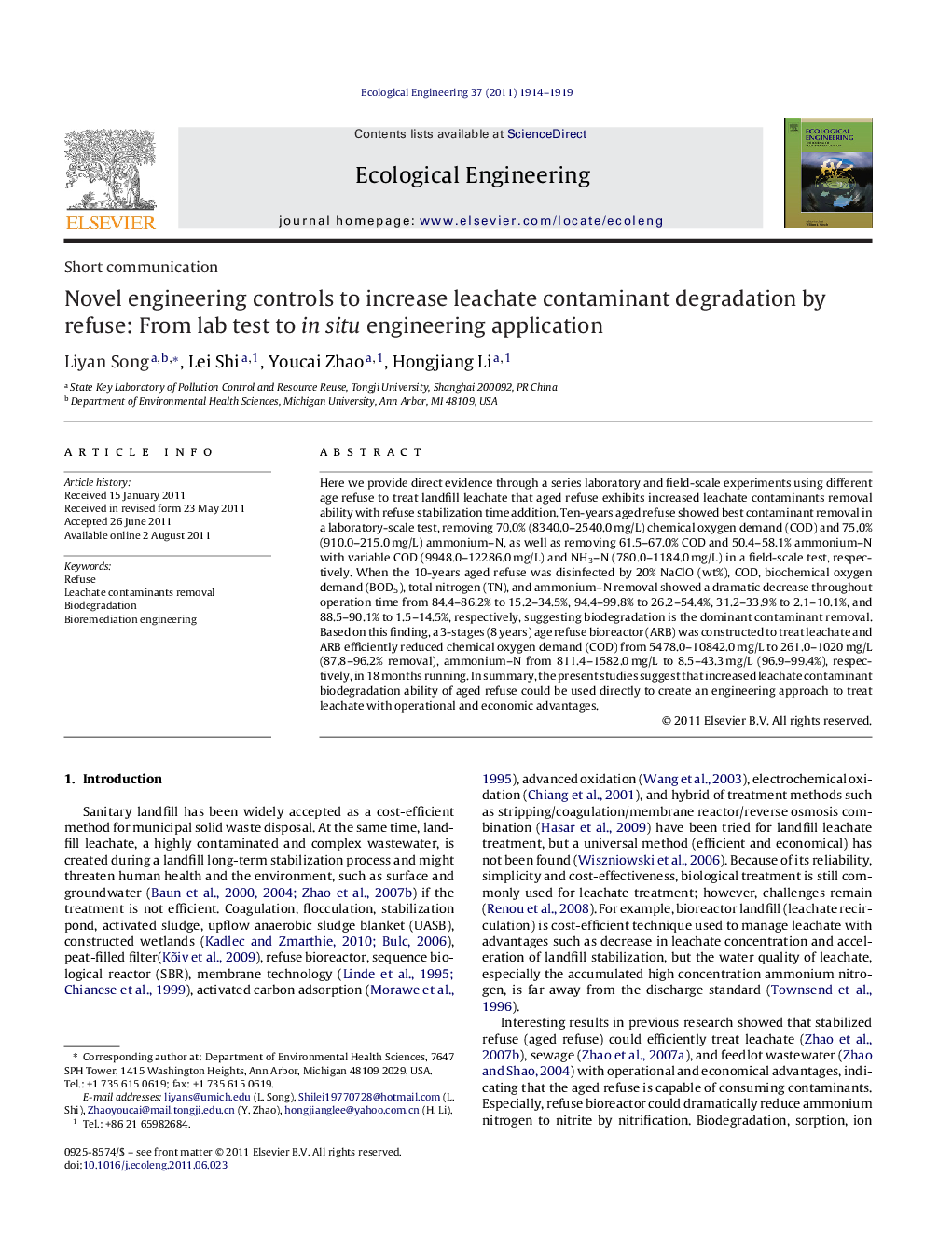| Article ID | Journal | Published Year | Pages | File Type |
|---|---|---|---|---|
| 4390146 | Ecological Engineering | 2011 | 6 Pages |
Here we provide direct evidence through a series laboratory and field-scale experiments using different age refuse to treat landfill leachate that aged refuse exhibits increased leachate contaminants removal ability with refuse stabilization time addition. Ten-years aged refuse showed best contaminant removal in a laboratory-scale test, removing 70.0% (8340.0–2540.0 mg/L) chemical oxygen demand (COD) and 75.0% (910.0–215.0 mg/L) ammonium–N, as well as removing 61.5–67.0% COD and 50.4–58.1% ammonium–N with variable COD (9948.0–12286.0 mg/L) and NH3–N (780.0–1184.0 mg/L) in a field-scale test, respectively. When the 10-years aged refuse was disinfected by 20% NaClO (wt%), COD, biochemical oxygen demand (BOD5), total nitrogen (TN), and ammonium–N removal showed a dramatic decrease throughout operation time from 84.4–86.2% to 15.2–34.5%, 94.4–99.8% to 26.2–54.4%, 31.2–33.9% to 2.1–10.1%, and 88.5–90.1% to 1.5–14.5%, respectively, suggesting biodegradation is the dominant contaminant removal. Based on this finding, a 3-stages (8 years) age refuse bioreactor (ARB) was constructed to treat leachate and ARB efficiently reduced chemical oxygen demand (COD) from 5478.0–10842.0 mg/L to 261.0–1020 mg/L (87.8–96.2% removal), ammonium–N from 811.4–1582.0 mg/L to 8.5–43.3 mg/L (96.9–99.4%), respectively, in 18 months running. In summary, the present studies suggest that increased leachate contaminant biodegradation ability of aged refuse could be used directly to create an engineering approach to treat leachate with operational and economic advantages.
